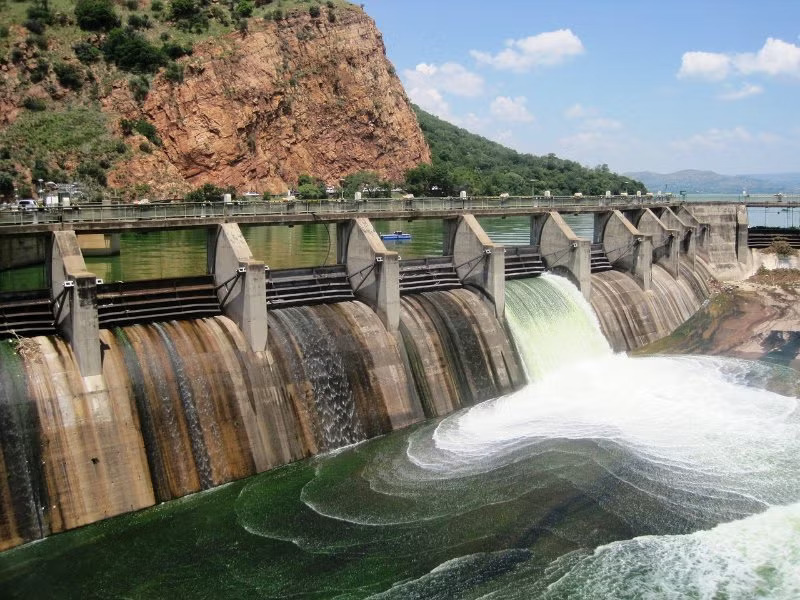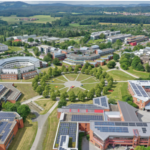By Destiny Uko
Hydroelectric power, or hydropower, is one of the cleanest and most sustainable ways of generating electricity. In Nigeria, it plays a vital role thanks to its abundant water bodies and tropical climate.
Every heavy rainfall simultaneously serves as a blessing for both farmers and owners of homes and businesses across the country.
Kainji, Jebba, Shiroro, and the recently completed Zungeru are among the powerhouses of hydro energy, contributing significantly to Nigeria’s power supply. Kainji and Jebba have a combined installed capacity of around 1,938 MW, while Shiroro adds another 600 MW. Zungeru joins the train with 700 MW.
These plants rely on abundant water, and their performance peaks during the rainy season (April to October) when water reservoirs swell and turbines operate at full throttle.
This explains why power companies report a considerable hike in electricity supply during these months. The Nigerian Electricity Regulatory Commission (NERC) confirmed that hydropower’s share of the national electricity supply rose from 20.3% to 25.5% between the second and third quarters of 2025.
Beyond an increase in water volume, the rainy season keeps the turbine working throughout the day and night, non-stop.
Despite the popular stereotype that dry months always outperform the rainy season in energy generation, research has shown that rainy seasons favour hydropower and, as such, enhance even increased power supply.
The Kainji hydropower station, for example, showed significantly higher turbine availability and output during wet periods.
Similar patterns have been recorded at Jebba Dam, where seasonal inflow translates into stronger generation.
Rain replenishes reservoirs, boosts turbine efficiency, and delivers robust power into the grid, rather than disrupting the flow.
Nigeria’s untapped hydropower potential is enormous – over 14,120 MW, capable of generating more than 50,800 GWh annually. Only a fraction of this capacity is currently in use, however. That suggests, therefore, that every drop of water during the rainy season offers hope for more consistent power in the future, if tapped.
Hydropower stands out for its minimal cost and sustainability. Unlike gas or diesel plants, it doesn’t burn fuel. After construction, its operation costs are low, at just ₦3.67 compared with the national average of ₦17.69 of energy tapped from other sources.
During wet seasons this cost advantage helps cushion the shortfall from other generation sources like gas.
Hydropower shines during the rainy months because of consistent water inflows which keep turbines running around the clock, larger reservoirs buffer supply over time, grid availability and stability improve with strong, sustained power from dams. The result? Brighter nights, lower electricity tariffs and a cleaner energy mix.
So when the clouds darken and the rains pour, it isn’t just to the delight of farmers alone. In Kainji and and Zungeru, the turbines spin faster, sparking the energy that lights your bulb.
Hydroelectric power, or hydropower, is a crucial and sustainable electricity-generating method in Nigeria, thanks to its abundant water resources and tropical climate. The Kainji, Jebba, Shiroro, and newly completed Zungeru hydropower plants significantly contribute to the country’s power supply, with a combined capacity of 3,238 MW. These plants reach peak efficiency during the rainy season (April to October), utilizing swollen reservoirs to run turbines non-stop, which leads to an increased share of electricity supply from hydropower.
Despite the common belief that dry months favor energy generation, rainy seasons actually enhance hydropower output, as evidenced by the improved performance of stations like Kainji and Jebba Dams. The Nigerian Electricity Regulatory Commission reported a rise in hydropower’s contribution to the national electricity supply, from 20.3% to 25.5% between two quarters in 2025. However, only a small fraction of Nigeria's potential 14,120 MW hydropower capacity is currently tapped.
Hydropower is advantageous for its cost-effectiveness and sustainability, with significantly lower operational costs compared to gas and diesel plants. During the wet season, this cost advantage helps mitigate shortfalls from other energy sources. Consistent water inflows in these months allow hydropower to enhance grid stability, resulting in lower electricity tariffs, a cleaner energy mix, and brighter periods for households and businesses. Therefore, the rainy season is essential for sustaining reliable power supply in Nigeria.






